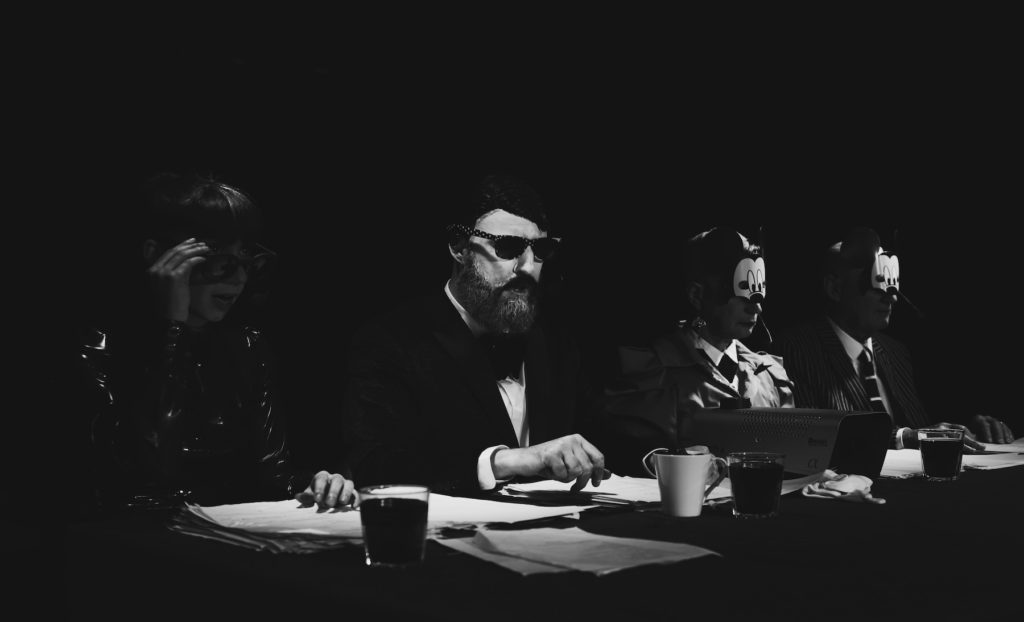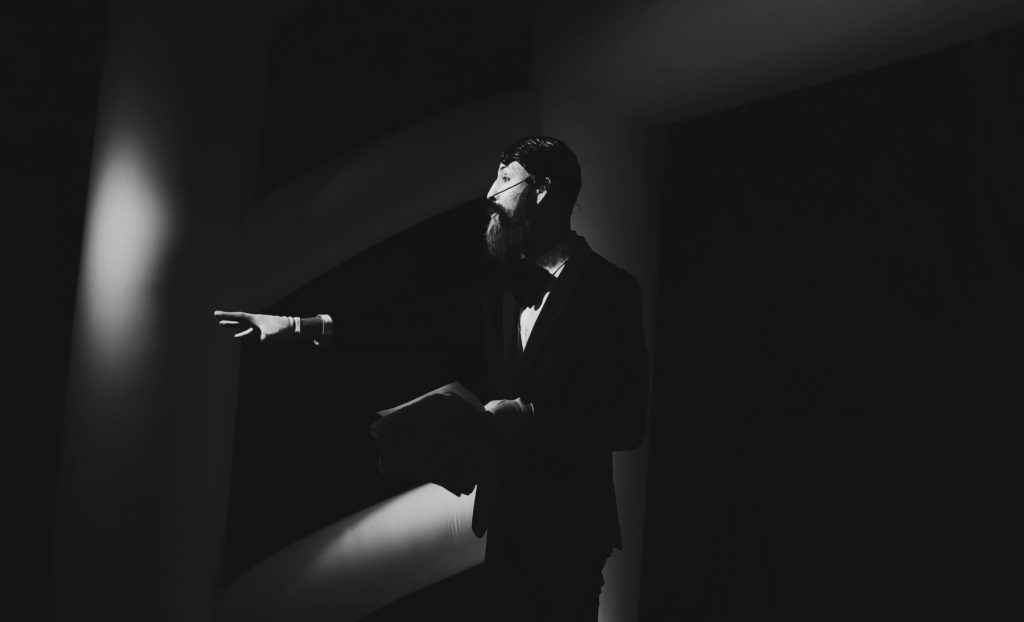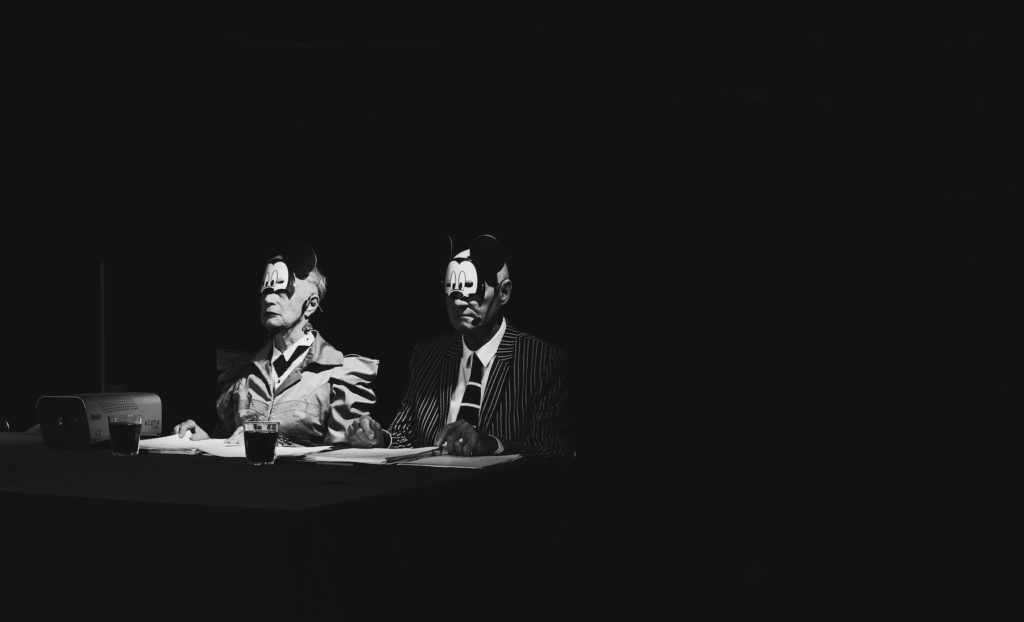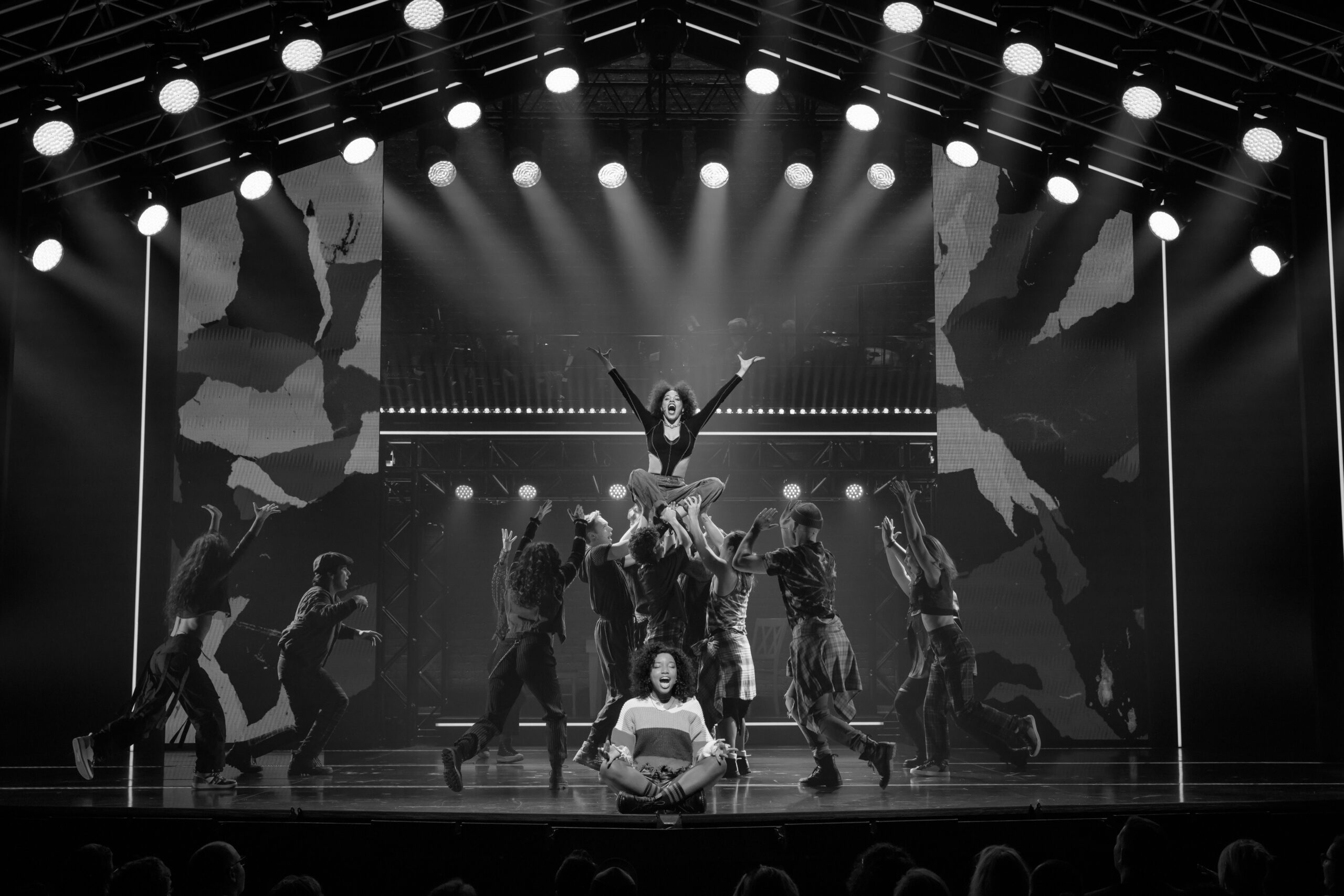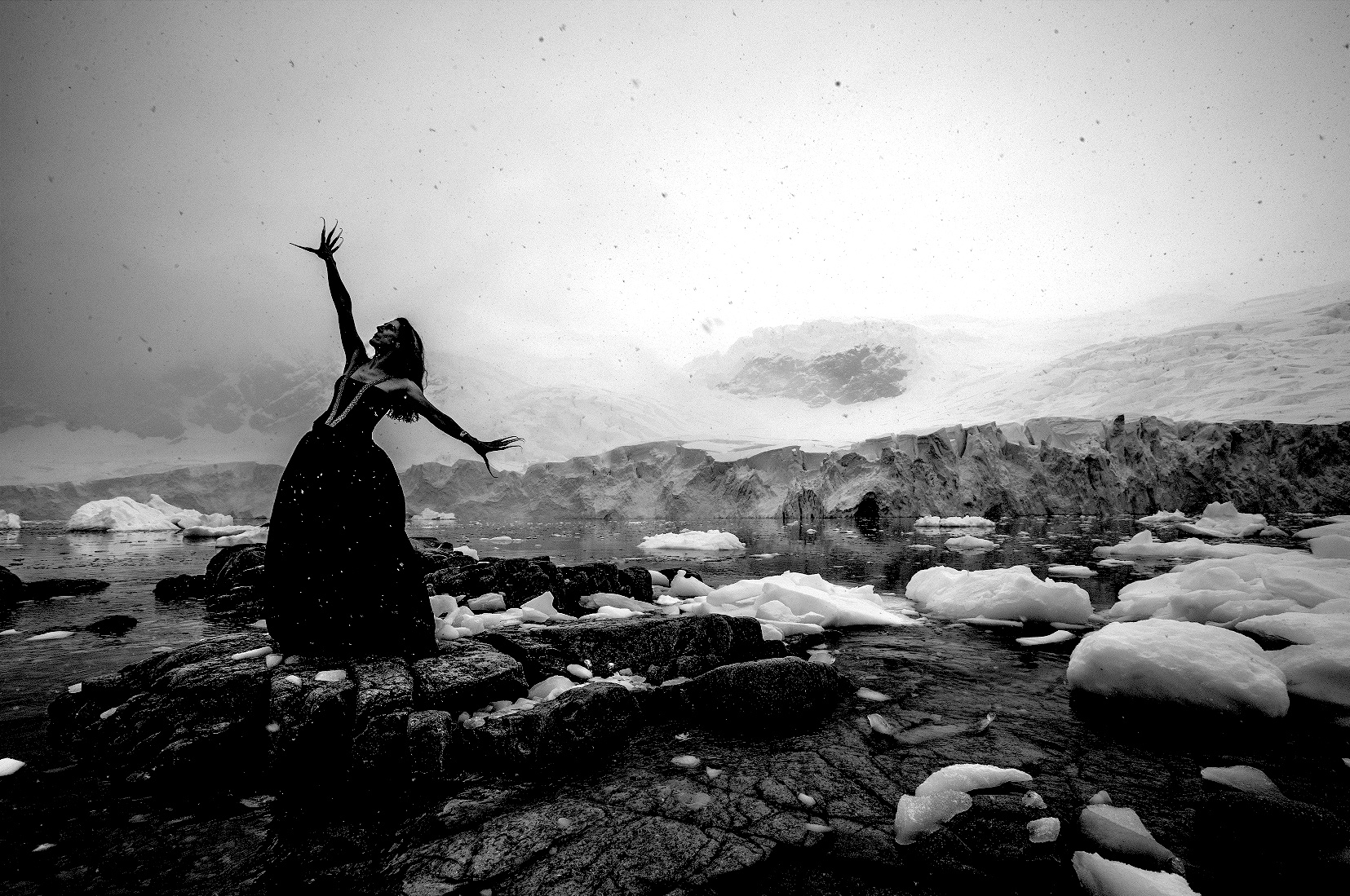THE DEATH OF WALT DISNEY
A Public Reading of An Unproduced Screenplay about the Death of Walt Disney – July 11 201 –MKA Theatre of New Writing had a bouncy castle custom-made for the show. It is snow-white and curved like the Buena Vista Pictures Distribution logo, a castle in the sky, offset against pitch black.
The Manderson-Galvin family of four are onstage to play the Disney family, who are at a table reading a screenplay written by Walt (Disney?) about his own death; hence, A Public Reading of An Unproduced Screenplay about the Death of Walt Disney. The screenplay is somewhat true, though over-exaggerated and warped by Walt’s grandiosity and intoxication. Tobias Manderson-Galvin’s Walt leads the affair with something that is not quite charming but forcefully engaging, like a sinister clown or Chaplin’s Hitler. Kerith Manderson-Galvin as Walt’s brother Roy is anti-theatrical with intense disdain and stalwart tolerance. Walt both clings to, and abuses Roy, who has made his dreams come true by liaising with the board, angry unions, and uncooperative lemmings. Professor Lenore Manderson is luminous as the wounded daughter of a god, and Patrick Galvin creates a beautifully ingenuous son-in-law with a childish grin and shining eyes. The presence of this living, breathing family is undeniable.
We are seeing in monochrome, post-techincolour, and it is glorious. The tight, detailed design recalls The Addams family, The Nightmare Before Christmas, the original Mickey cartoons: noir and chic and gothic with velvet, latex and pinstripe. Jules Pascoe’s (of Jazz Party notoriety) score is boozy and dreamy like a Les Baxter record, softening the sharp edges. It’s important because the staging is, at times, static and stuck behind the table.The show is realised with delicacy and audacity which capitalises on the multiple layers at play. It’s very self-aware about being a reading of screenplay. The audience is held in that reality by the tropes on the table, the presence of the script, the ‘actors’ dutifully reading their lines and Walt chiming in incessantly with “CUT TO:” but, we are being dragged into a dream; exposed to a mess of a man, his worn out brother, his confused heirs and his own decline.
This is a child-man-megalomaniac’s fixation on legacy and, concurrently, a lead actor’s obsession for control. Obvious parallels can be drawn with another male linchpin of current American culture. A reminder that there are real people who live by the dictum: “What is the point unless you’re one of the most important people who’s ever lived?”

